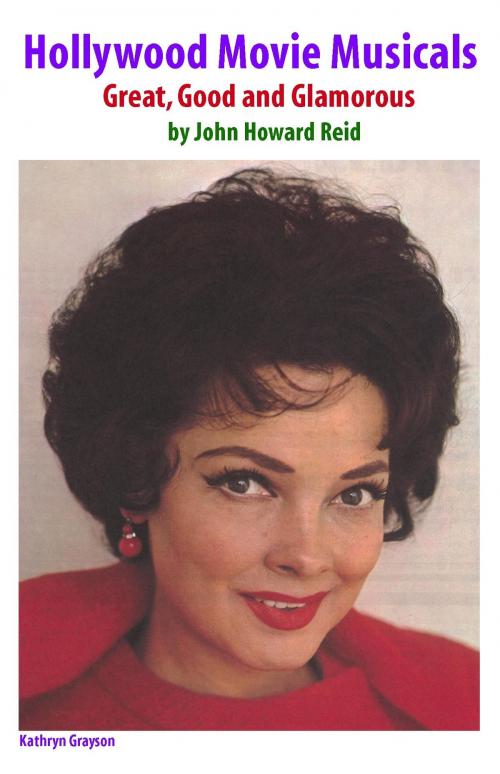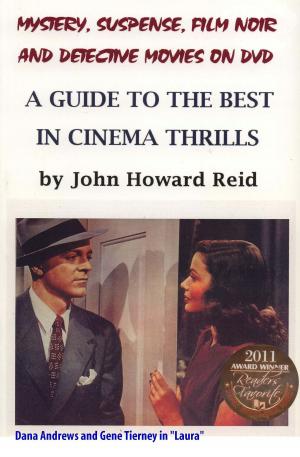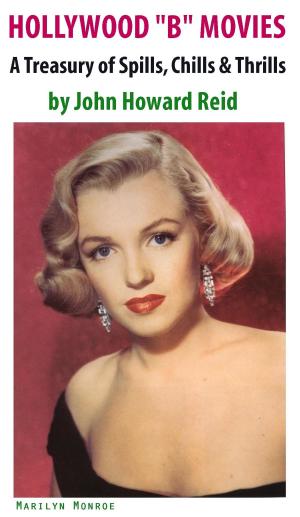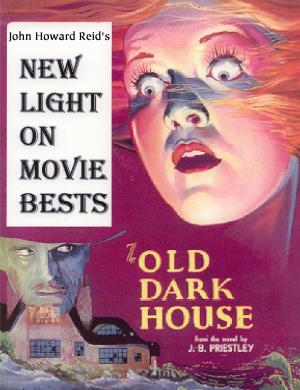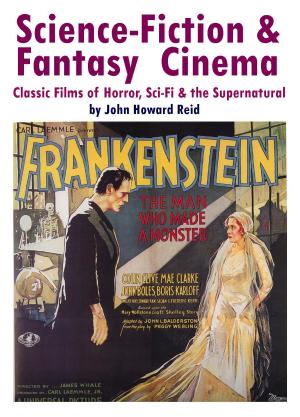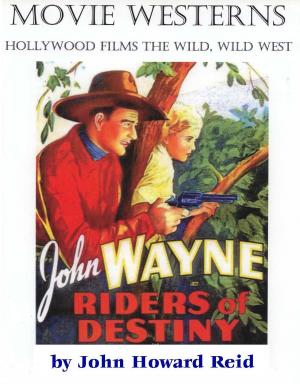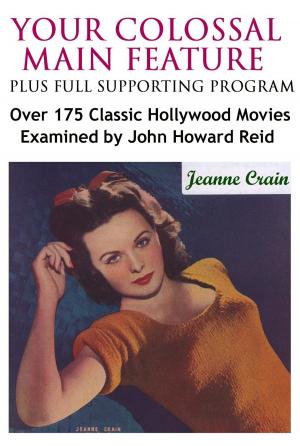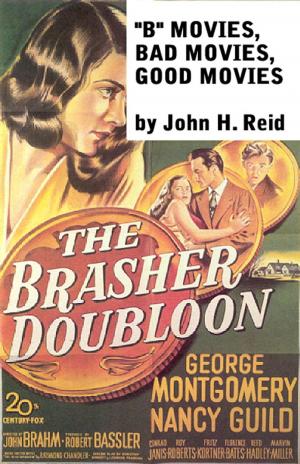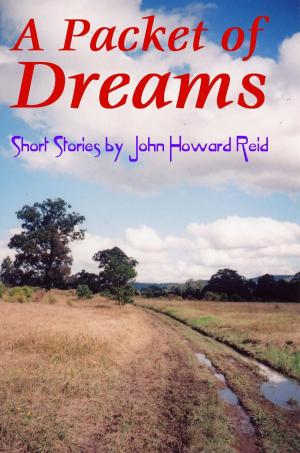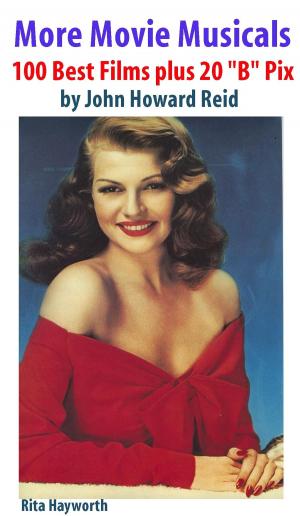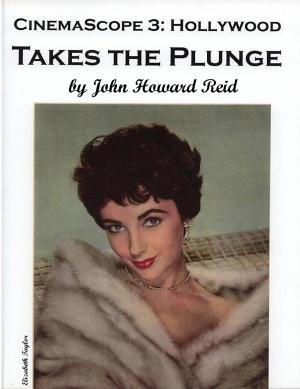Hollywood Movie Musicals: Great, Good and Glamorous
Nonfiction, Entertainment, Music, Music Styles, Musicals| Author: | John Howard Reid | ISBN: | 9781458054142 |
| Publisher: | John Howard Reid | Publication: | March 25, 2011 |
| Imprint: | Smashwords Edition | Language: | English |
| Author: | John Howard Reid |
| ISBN: | 9781458054142 |
| Publisher: | John Howard Reid |
| Publication: | March 25, 2011 |
| Imprint: | Smashwords Edition |
| Language: | English |
In the golden years of cinema, Hollywood's Christmas present to ardent movie fans was almost always a brace of spectacular musicals. In those days, musicals easily rated as the most popular genre of movies. They were eagerly anticipated not only by the carriage trade but working-class audiences as well. This book provides a guide to over 150 of these crowd-pleasing, musical delights, ranging from "Annie Get Your Gun" to "Ziegfeld Girl". To give you an idea of the scope of this book here are just ONE of those 150 entries: ROAD TO RIO: Bing Crosby (Scat Sweeney), Bob Hope (Hot Lips Barton), Dorothy Lamour (Lucia Maria De Andrade), Gale Sondergaard (Catherine Vail), Frank Faylen (Trigger), Joseph Vitale (Tony), Frank Puglia (Rodrigues), Nestor Paiva (Cardoso), Robert Barrat (Johnson), Jerry Colonna (cavalry captain), Wiere Brothers (musicians), Andrews Sisters, Carioca Boys, Stone-Baron Puppeteers (themselves), George Meeker (Sherman Maley), Stanley Andrews (Captain Harmon), Harry Woods (ship's purser), Tor Johnson (Samson), Donald Kerr (steward), Stanley Blystone (assistant purser), George Sorel (prefeito), John "Skins" Miller (dancer), Alan Bridge, (ship's officer), Arthur Q. Bryan (Stanton), Babe London (woman), Gino Corrado (barber), George Chandler (valet), Paul Newlan, George Lloyd (butchers), Fred Zendar (stevedore), Ralph Gomez, Duke York, Frank Hagney (roustabouts), Ralph Dunn (foreman), Peipito Perez (dignified gentleman), Ray Teal (Buck), Brandon Hurst (barker), Barbara Pratt (airline hostess), Tad Van Brunt (pilot), Patsy O'Bryne (charwoman), Raul Roulien (cavalry officer), Charles Middleton (farmer), Albert Ruiz, Laura Corbay (specialty dancers), Frank Ferguson (Buck's foreman). Director: NORMAN Z. McLEOD. Screenplay: Edmund Beloin, Jack Rose. Photography: Ernest Laszlo. Film editor: Elsworth Hoagland. Art directors: Hans Dreier, Earl Hedrick. Set decorators: Sam Comer, Ray Moyer. Costumes: Edith Head. Make-up: Wally Westmore. Special photographic effects: Gordon Jennings, Paul Lerpae. Process photography: Farciot Edouart. Assistant director: Oscar Rudolph. Sound recording: Harold Lewis, Walter Oberst. Western Electric Sound System. Producer: Daniel Dare. Songs: "But Beautiful" (Crosby); "You Don't Have To Know the Language" (Crosby, Andrews Sisters); "Experience" (Lamour); "Apalachicola, Fla" (Crosby, Hope); "Cavaquinho" (Wiere Brothers) -- all by Johnny Burke (lyrics) and James Van Heusen (music), who wrote another song, "For What?" for the Andrews Sisters, but this was deleted; "Brazil" (orchestral) by Ary Barroso (music), Bob Russell (lyrics). Music director: Robert Emmett Dolan. Music associate: Troy Sanders. Vocal arrangements: Joseph J. Lilley. Dances staged by Bernard Pearce and Billy Daniels. Executive producers: Bing Crosby, Bob Hope. Copyright 25 August 1947 by Bing Crosby Enterprises, Inc., and Hope Enterprises, Inc. Released through Paramount. New York opening at the Paramount: 18 February 1948. U.S. release: 25 December 1947. U.K. release: 29 March 1948. Australian release: 6 May 1948. 9,144 feet. 101 minutes. SYNOPSIS: After a wonderfully stimulating special effects cross-country montage sequence in which our ever-helpful crooner identifies himself firstly as Frank Sinatra, than as Gene Autry, Bing and Bob sing and dance their way through "Apalachicola, Fla", after which they burn down a whole carnival. And this is just for openers. Fleeing from the vengeance of the carnival owner, they stow away on board a luxury passenger ship bound for Rio where they meet and rescue a beautiful heiress who is being craftily mesmerized by her evil aunt. The aunt's two goons hunt the boys down, but... NOTES: Fifth of the seven Road pictures. With a domestic rentals gross of $4.5 million , this was the number one boxoffice attraction in the U.S. and Canada in 1948. Best Actor, Bing Crosby -- Photoplay Gold Medal Award. (Alas, no space left for the Review itself!)
In the golden years of cinema, Hollywood's Christmas present to ardent movie fans was almost always a brace of spectacular musicals. In those days, musicals easily rated as the most popular genre of movies. They were eagerly anticipated not only by the carriage trade but working-class audiences as well. This book provides a guide to over 150 of these crowd-pleasing, musical delights, ranging from "Annie Get Your Gun" to "Ziegfeld Girl". To give you an idea of the scope of this book here are just ONE of those 150 entries: ROAD TO RIO: Bing Crosby (Scat Sweeney), Bob Hope (Hot Lips Barton), Dorothy Lamour (Lucia Maria De Andrade), Gale Sondergaard (Catherine Vail), Frank Faylen (Trigger), Joseph Vitale (Tony), Frank Puglia (Rodrigues), Nestor Paiva (Cardoso), Robert Barrat (Johnson), Jerry Colonna (cavalry captain), Wiere Brothers (musicians), Andrews Sisters, Carioca Boys, Stone-Baron Puppeteers (themselves), George Meeker (Sherman Maley), Stanley Andrews (Captain Harmon), Harry Woods (ship's purser), Tor Johnson (Samson), Donald Kerr (steward), Stanley Blystone (assistant purser), George Sorel (prefeito), John "Skins" Miller (dancer), Alan Bridge, (ship's officer), Arthur Q. Bryan (Stanton), Babe London (woman), Gino Corrado (barber), George Chandler (valet), Paul Newlan, George Lloyd (butchers), Fred Zendar (stevedore), Ralph Gomez, Duke York, Frank Hagney (roustabouts), Ralph Dunn (foreman), Peipito Perez (dignified gentleman), Ray Teal (Buck), Brandon Hurst (barker), Barbara Pratt (airline hostess), Tad Van Brunt (pilot), Patsy O'Bryne (charwoman), Raul Roulien (cavalry officer), Charles Middleton (farmer), Albert Ruiz, Laura Corbay (specialty dancers), Frank Ferguson (Buck's foreman). Director: NORMAN Z. McLEOD. Screenplay: Edmund Beloin, Jack Rose. Photography: Ernest Laszlo. Film editor: Elsworth Hoagland. Art directors: Hans Dreier, Earl Hedrick. Set decorators: Sam Comer, Ray Moyer. Costumes: Edith Head. Make-up: Wally Westmore. Special photographic effects: Gordon Jennings, Paul Lerpae. Process photography: Farciot Edouart. Assistant director: Oscar Rudolph. Sound recording: Harold Lewis, Walter Oberst. Western Electric Sound System. Producer: Daniel Dare. Songs: "But Beautiful" (Crosby); "You Don't Have To Know the Language" (Crosby, Andrews Sisters); "Experience" (Lamour); "Apalachicola, Fla" (Crosby, Hope); "Cavaquinho" (Wiere Brothers) -- all by Johnny Burke (lyrics) and James Van Heusen (music), who wrote another song, "For What?" for the Andrews Sisters, but this was deleted; "Brazil" (orchestral) by Ary Barroso (music), Bob Russell (lyrics). Music director: Robert Emmett Dolan. Music associate: Troy Sanders. Vocal arrangements: Joseph J. Lilley. Dances staged by Bernard Pearce and Billy Daniels. Executive producers: Bing Crosby, Bob Hope. Copyright 25 August 1947 by Bing Crosby Enterprises, Inc., and Hope Enterprises, Inc. Released through Paramount. New York opening at the Paramount: 18 February 1948. U.S. release: 25 December 1947. U.K. release: 29 March 1948. Australian release: 6 May 1948. 9,144 feet. 101 minutes. SYNOPSIS: After a wonderfully stimulating special effects cross-country montage sequence in which our ever-helpful crooner identifies himself firstly as Frank Sinatra, than as Gene Autry, Bing and Bob sing and dance their way through "Apalachicola, Fla", after which they burn down a whole carnival. And this is just for openers. Fleeing from the vengeance of the carnival owner, they stow away on board a luxury passenger ship bound for Rio where they meet and rescue a beautiful heiress who is being craftily mesmerized by her evil aunt. The aunt's two goons hunt the boys down, but... NOTES: Fifth of the seven Road pictures. With a domestic rentals gross of $4.5 million , this was the number one boxoffice attraction in the U.S. and Canada in 1948. Best Actor, Bing Crosby -- Photoplay Gold Medal Award. (Alas, no space left for the Review itself!)
